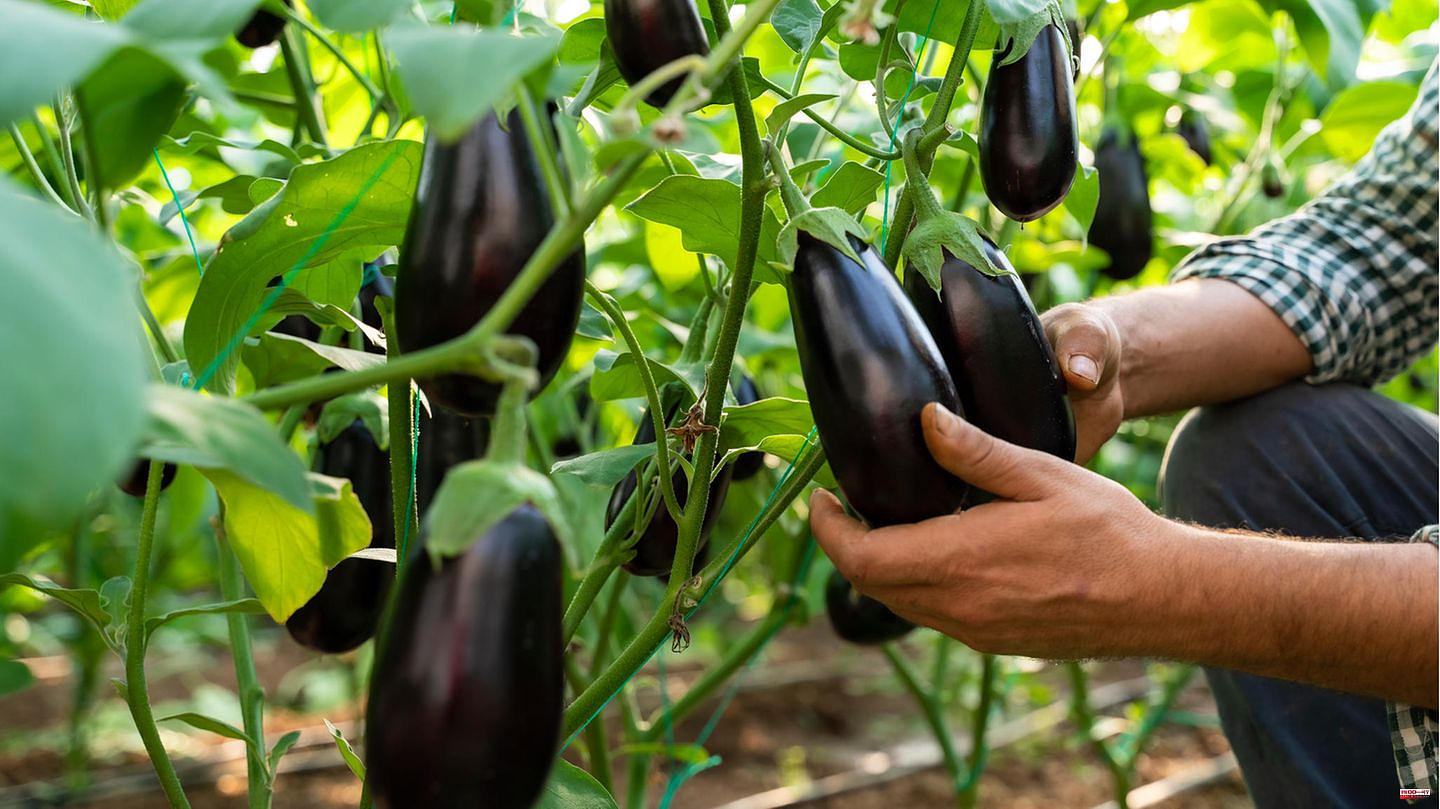Due to its egg-shaped fruits, the vegetable plant from Asia is also called egg tree, egg fruit or egg plant. Typical of the annual nightshade plant are its furry, large leaves and violet flowers (with yellow stamens), from which the aubergines will later develop - preferably at 25 degrees in a wind-protected, sunny location. Since the spring-like temperatures in Germany are far from warm enough at the time of sowing, you have to help a little. How to successfully plant and harvest eggplant will be discussed below.
Aubergines need warmth in particular: For optimal growth, the vegetable plants need temperatures of around 25 degrees. For this reason, a greenhouse is the best location for rearing - alternatively, they need a warm, sheltered spot outdoors. However, if the outside temperature falls below 15 degrees, the eggplants stop growing. It is also important to know that aubergines do not like high humidity, so the foil greenhouse should be aired regularly. As far as the soil is concerned, the subtropical plants prefer loose and humus-rich soil - preferably in combination with some compost. Rearing works just as well in (raised) beds as in flower tubs, as long as the aubergines have enough space and are supplied with sufficient water.
Aubergines need a lot of time before they bear the first fruits - for this reason, sowing should be done as early as possible (best between the end of January and the beginning of March). Use suitable containers for the cultivation, in which you put nutrient-rich seed soil and slightly compact it, as well as one seed per pot: the sowing depth should be between one and two centimetres. Water the soil thoroughly and cover it with a transparent film for more humidity. Then place the seed pots in a warm, sunny location such as the window sill. After seven to 21 days, the plants should start to germinate. You can prick out the aubergines as they grow so that individual shoots (and fruits) develop more vigorously.
When it comes to care, you can support your aubergine plants like this:
In May, the young nightshades can be planted out - for example in the vegetable garden, the greenhouse or a raised bed on the balcony. A nutrient-rich, loose potting soil is also important here. When repotting, make sure to keep a minimum distance of 60 centimeters between the plants. This gives the growing leaves and shoots enough space to spread out. To support the increasing weight, a climbing aid per eggplant makes sense. The fruits should be ready to harvest between July and September. You can tell when it's the right time by the rich violet color that aubergines are known for. Another indication are the sepals: if the fruits are ripe, the leaves are light green and not browned.
Source: My beautiful garden
This article contains so-called affiliate links. Further information are available here.












